
Buick (/ˈbjuːɪk/) is a division of the American automobile manufacturer General Motors (GM). Started by automotive pioneer David Dunbar Buick, it was among the first American marques of automobiles, and was the company that established General Motors in 1908.
Before the establishment of General Motors, GM founder William C. Durant had served as Buick's general manager and major investor.
For much of its existence in the North American market, Buick has been marketed as a premium automobile brand, selling luxury vehicles positioned above GM's mainstream brands, while below the flagship luxury Cadillac division. Buick's current target demographic according to The Detroit News is "a successful executive with family."
After securing its market position in the late 1930s, when junior companion brand Marquette and Cadillac junior brand LaSalle were cancelled, Buick was recognized as an upscale luxury car with a conservative appearance, as opposed to more ostentatious Cadillac and technology-rich, forward-thinking Oldsmobile. During this same time period, many manufacturers were introducing V8 engines in their high-end models, while Buick used a straight-8 for all models starting in 1931.
The first Buick V8 was introduced in 1953, then in 1962, the Buick V6 was introduced for the compact Special model. Buick engines, with few exceptions, have always used overhead valves which the company pioneered in the 1904 Buick Model B.

Early years
Valve-In-Head (OHV) engine, illustration from 1904 patent, Buick Manufacturing Company
Buick is one of the oldest automobile brands in the world and currently the oldest in the United States. (Autocar, founded in 1897, is the oldest motor vehicle manufacturer in the western hemisphere; while originally an automobile maker, Autocar now builds heavy trucks. Oldsmobile, also an early auto maker founded in 1897, is now defunct; Studebaker was founded in 1852, but did not begin producing automobiles until 1902; Mr. Ford produced his first car in 1896 but did not start the Ford Motor Co. until 1903, and during the period in between was involved with other automobile manufacturers such as Cadillac, founded in 1902).
The first logo of Buick (1904), with an image of the Uncle Sam and the legend "known all over the world"
The first two Buick automobiles were made in 1899 and 1900 at the "Buick Auto-Vim and Power Company" by chief-engineer Walter Marr, but company owner David Dunbar Buick was reluctant to begin making automobiles, being satisfied with stationary and marine engine production, so Marr left Buick in 1901 to found his own automobile company under his own name.
His replacement was Eugene Richard, who applied for a patent in 1902 for Marr's valve-in-head (overhead valve) engine, which patent, number 771,095, was awarded to Richard in the name of Buick in 1904.
In 1903, the third Buick automobile was made, this time by Richard, but in 1904 Buick, whose company was now called "Buick Motor Company", moved from Detroit to Flint, Michigan, and Richard stayed behind. Marr was rehired in Flint as chief engineer, to begin making automobiles in production.
That year, 37 Buick automobiles were made, production increasing to 750 in 1905, 1,400 in 1906, 4,641 in 1907, and 8,800 in 1908, taking the number one spot away from close competitors Oldsmobile, Ford, and Maxwell.
David Buick incorporated his company as the Buick Motor Company on May 19, 1903, in Detroit, Michigan. Buick had been financed by friend and fellow automobile enthusiast, Benjamin Briscoe, who in September 1903 sold control of the business to James H. Whiting (1842–1919), of Flint Wagon Works, in Flint, Michigan. Whiting moved Buick to Flint, to a location across the street from his factory, with the idea of adding Buick's engines to his wagons.
David Buick stayed on as a manager and re-hired Walter Marr as chief engineer. The engine Buick and Marr developed for this automobile was a two-cylinder valve-in-head engine of 159 cubic inches, with each cylinder horizontal and opposed to the other by 180 degrees.

Louis Chevrolet in his Buick 60 Special (aka "Buick Bug") in 1910
Whiting built only a few automobiles in 1904, the Model B, before running out of operating capital, causing him to bring in William C. Durant that year as controlling investor. Durant built a few more model B's in 1904, and greatly stepped up production for the model C in 1905, and spent the next four years turning Buick into the biggest-selling automobile brand in the US. During the 19th century, Durant had made his fortune as co-owner, also in Flint, with Josiah Dallas Dort, of the Durant-Dort Carriage Company, which by 1904 was the largest carriage-making company in the country and one of the largest in the world.
Durant moved most Buick production to the former Durant-Dort Imperial Wheel plant in Jackson, Michigan in 1905. Buick continued car production in Jackson through 1907, when Factory #1 was completed in Flint. The Jackson plant continued production with Buick trucks through 1912.
David Buick sold his stock upon departure in 1906, making him a wealthy man, but he died in modest circumstances 25 years later. In 1907, Durant agreed to supply motors to R. S. McLaughlin in Canada, an auto maker, and in 1908 he founded General Motors.
Buick in the early years
Between 1899 and 1902, two prototype vehicles were built[9] in Detroit, Michigan by Walter Lorenzo Marr. Some documentation exists of the 1901 or 1902 prototype with tiller steering[10] similar to the Oldsmobile Curved Dash. In mid-1904, another prototype was constructed for an endurance run, which convinced Whiting to authorize production of the first models offered to the public. The architecture of this prototype was the basis for the Model B.
The first Buick made for sale, the 1904 horizontally opposed 2-cylinder engine Model B, was built in Flint, Michigan at a re-purposed factory that was known as the Flint Wagon Works.[12] There were 37 Buicks made that year, none of which survive. There are, however, two replicas in existence: the 1904 endurance car, at the Buick Gallery & Research Center in Flint, and a Model B assembled by an enthusiast in California for the division's 100th anniversary.[13][14] Both of these vehicles use various parts from Buicks of that early era, as well as fabricated parts. These vehicles were each constructed with the two known surviving 1904 engines.
The early success of Buick is attributed mainly to what it called the valve-in-head engine, now known as the overhead valve (OHV), engine patented by Eugene Richard and developed by Richard, Buick, and Marr. The Model F had a two-cylinder engine, an 87-inch wheelbase and weighed 1,800 lbs.[16] The creation of General Motors is attributed in part to the success of Buick, so it can be said Marr and Richard's designs directly led to GM.[18] The power train and chassis architecture introduced on the Model B was continued through the 1909 Model F.
The basic design of the 1904 Buick was optimally engineered even by today's standards. The flat-twin engine is inherently balanced, with torque presented to the chassis in a longitudinal manner, actually cancelling front end lift, rather than producing undesirable lateral motion. The engine was mounted amidships, now considered the optimal location.
Billy Durant was a natural promoter, and Buick soon became the largest car maker in America. Using the profits from this, Durant embarked on a series of corporate acquisitions, calling the new megacorporation General Motors. At first, the manufacturers comprising General Motors competed against each other, but Durant ended that.
He wanted each General Motors division to target one class of buyer, and in his new scheme, Buick was near the top—only the Cadillac brand had more prestige, a ranking that Buick occupies currently in the General Motors lineup. To save on resources, Buick vehicles shared a common platform, called the GM A platform, that was shared with Chevrolet, Oakland, Oldsmobile and Cadillac. The ideal Buick customer is comfortably well off, possibly not quite rich enough to afford a Cadillac, nor desiring the ostentation of one, but definitely in the market for a car above the norm.
At first, Buick followed the likes of Napier in automobile racing, winning the first-ever race held at Indianapolis Motor Speedway.
The first full-size Buick to join the smaller Model B was in 1907, when the Buick Model D was introduced with a four-cylinder 255.0 cu in (4,178 cc) T-head engine, installed in the front with rear-wheel drive. This was one of the only cars with side valves that Buick ever made.

1910s - 1920s
In 1910, Buick introduced the Model 10 with an OHV four-cylinder engine followed in 1911, with their first closed-body car, the Buick Six,[24] that followed the same bodystyle that first appeared at Cadillac, and four years ahead of Ford. The car was built at the all-new factory in Flint which later became known as Buick City.
Buick during the 1920s made various sized vehicles, with series designations for different years, sometimes using numbers, while later years using lettered designations. One of the larger vehicles, with straight-six, was the Buick Master Six.
In the 1910s and 1920s, Buick was a prestige brand in the Republic of China with the brand driven by or for high-level politicians and the Emperor. Buick now sells 80% of its production in the People's Republic of China and is a minor player in the Republic of China on Taiwan.
In 1929, as part of General Motors' companion make program, Buick Motor Division launched the Marquette sister brand, designed to bridge the price gap between Buick and Oldsmobile; however, Marquette was discontinued in 1930. All Buick, Marquette, Viking, and Oldsmobile products shared the newly introduced GM B platform starting in 1926.

1930s
Buick debuted two major achievements for the 1931 model year, the OHV Buick Straight-8 engine and a synchromesh transmission in all models but the Series 50. The Eight was offered in three displacements, the 220 cubic inch (bore 2 7/8 in. stroke 4.25 in.), was available in the Series 50 with 77 brake HP. The Series 60 engine was a 272 cu. in. unit (bore 3 1/16 in., stroke 5 in.) giving 90 brake HP. Cadillac had previously introduced the Cadillac Type 51 with a flathead V8 engine in 1915 which made usage of an eight-cylinder engine a luxury feature.
The Series 80 and Series 90 used a 344 cu. in. version (bore 3 5/16 in., stroke 5 in.) for 104 brake HP. Automatic vacuum-operated spark advance was another new feature replacing the steering column-mounted spark lever although an emergency lever was now dash mounted. Buick scored another first in 1939 when it became the first company to introduce turn signals, which did not appear on other car brands until almost a decade later. All 1939 models also had a steering column-mounted shift lever.
In the mid 1930s McLaughlin-Buicks were particularly popular with British monarch Edward VIII.[28][29] He imported and used a Canadian built McLaughlin-Buick. It was GM's top brand in Canada.[30] Being Canada's most luxurious brand, Buicks are always presented for royal transport within Canada, including for King George VI and Queen Elizabeth during the 1939 royal tour of Canada.[30][dead link]
In the 1920s and 1930s Cadillac and Buick vehicles were popular with long-distance passenger service operators e.g. the Nairn Transport Company in the Middle East (Baghdad-Damascus).







































































































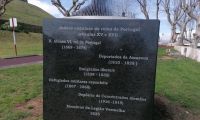




















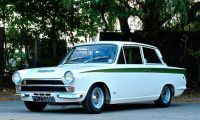








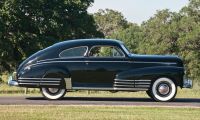















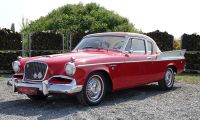






























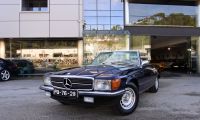









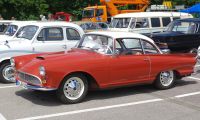


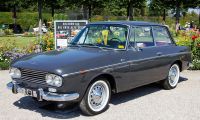
























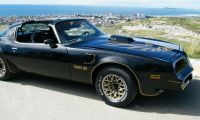














































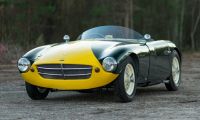



















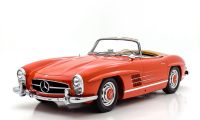































































































































































































































































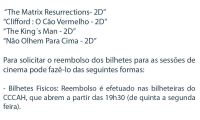









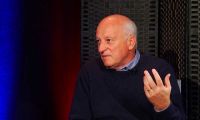
























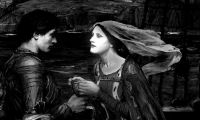











































































































































































































































































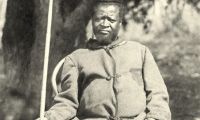























































































































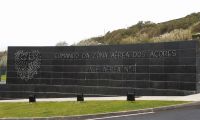







































































































































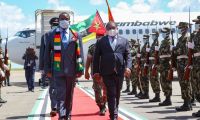




































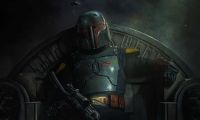






























































































































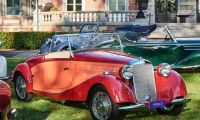

























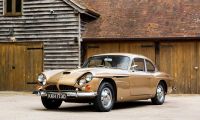




















































































































































































































 LINKS E SITES IMPORTANTES
LINKS E SITES IMPORTANTES


